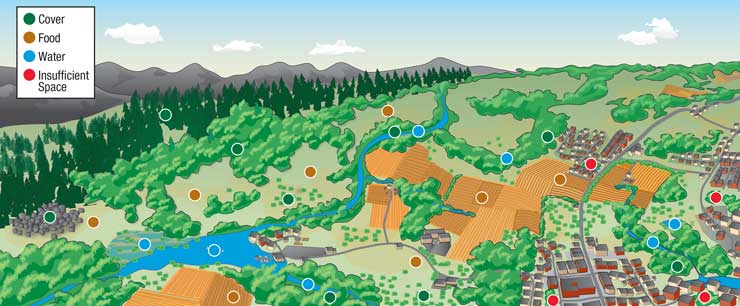Habitat Management

The habitat is where a species fulfills its basic life needs: nourishment, procreation, and rest. If not managed properly, urban development can result in habitat loss, which presents the greatest threat to wildlife.
- Habitat management, the most essential aspect of wildlife management, safeguards the essential elements to meet these needs.
- Food and water are necessary to all wildlife. Competition for these elements among species makes cover, space, and arrangement top priorities.
- Cover protects animals from predators and the weather while they feed, breed, roost, nest, and travel. Cover ranges from thick weeds and brush to a few rocks piled together.
- Space is necessary for adequate food among wildlife, territorial space for mating and nesting, and freedom from stress-related diseases.
- The ideal arrangement places food, water, cover, and space in a small area so that animals minimize their energy use while fulfilling their basic needs for nourishment, procreation, and rest.
- Edge effect refers to the consequence of placing two contrasting ecosystems adjacent to one another. Most animals are located where food and cover meet, particularly near water. An example would be a river bottom, which offers many animals all their habitat needs along one corridor.